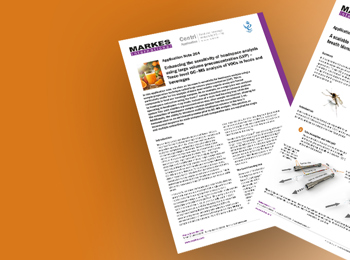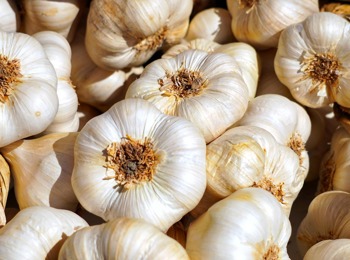
Detecting adulterated paprika: Food authenticity and quality assessment
30 May 2025
How advanced aroma analysis techniques can reveal hidden adulterants in paprika and other high-value spices
Ensuring the authenticity and quality of food products has been a long-standing challenge. In the case of paprika – valued for its vibrant colour and distinctive aroma – the risk of adulteration is significant.
Adulterants – impurities intentionally added to dilute the product for financial gain – can be introduced with little obvious impact on appearance or flavour, making detection difficult. In recent work at Markes, we explored how combining static headspace extraction with thermal desorption could uncover the full flavour profile of the sample, and discovered subtle differences in the overall profile that would have gone unnoticed with static headspace alone. Since presenting this work at Pittcon 2025, I’ve had time to reflect on how these methods could offer a broader, more powerful approach to authenticity testing, not just for paprika, but for other complex food products too.
Tackling the complexity of adulteration detection
For preliminary testing, we sampled a simulated adulterant, rice flour, using headspace-trap sampling with multi-step enrichment (MSE®) on the Centri 180. MSE is a powerful technique that enables multiple headspace extractions to be held on the focusing trap together before analysis, allowing analytes from a larger total volume to be concentrated and delivered to the GC in a narrow vapour band of approximately 100 µL.
For our rice flour sample, we performed four enrichments and found a wide range of analytes. The top 25 compounds are highlighted in Figure 1.
Figure 1 - TIC chromatogram of the simulated adulterant rice flour with the top 25 compounds present.
Compounds identified
- Acetone
- 2-Butanone
- Acetic acid
- Butanal, 3-methyl
- 2-propanol, 2-methyl
- Acetoin
- Pentanal
- 1-Butanol, 2-methyl
- 1-Pentanol
- Hexanal
- 2,4-Dimethyl-1-heptene
- 1-Hexanol
- 2-Heptanone
- Heptanal
- Butanoic acid, 4-hydroxy-
- Alpha-pinene
- 1-Octen-3-ol
- Furan, 2-pentyl
- 1-Octene, 3,7-dimethyl-
- o-Cymene
- Tetradecane
- Undecane
- 2-Undecanethiol, 2-methyl
- 2-Propenoic acid, 2-methyl-, 3,3,5-trimethylcyclohexyl ester
- [1,1':3',1''-Terphenyl]-2'-ol
These results revealed several compounds that could be used as markers to detect rice flour, but a complicating factor is the complexity and variability of pure paprika samples, which may also naturally contain many of these compounds.
We then deliberately introduced rice flour at varying levels into sweet and hot paprika samples to see if we could detect clear differences between the adulterated and pure samples (Figure 2). However, even at high levels of adulteration, differences in total ion chromatograms were not obvious, and picking out subtle differences was time consuming, with potential to miss key compounds at trace levels. It became clear that a new strategy was needed.

Figure 2 - TIC chromatograms of paprika samples A and B with ranging adulterations of rice flour.
Using ChromCompare+ (a chemometric software application from SepSolve Analytical Ltd) and applying multivariate statistical tools such as Principal Component Analysis, we were able to clearly separate pure and adulterated samples based on their chemical fingerprints (Figure 3). Distinct clustering of sample replicates was observed, where algorithm-based analysis revealed subtle but consistent differences in the chromatographic profiles. This provides a reliable means of determining if the sample has been adulterated, as an unknown adulterated sample should not cluster with pure paprika samples from the same batch. Applying this approach could be transformative for other high-value spices and foodstuffs – products like saffron, turmeric and vanilla, where adulteration is prevalent.

Figure 3 - PCA plot of sample A and B with differing ranges of adulteration. Tight clustering of replicates from all adulteration levels shown.
Delivering practical benefits to the food industry
The integration of static headspace sampling with thermal desorption offers significant opportunities for the food industry. It allows manufacturers to build detailed aroma profiles, track subtle quality changes over time, and protect brand integrity. Moreover, it opens new possibilities not only for authenticity testing but for shelf-life studies, product development and competitive analysis, providing a broader understanding of complex food matrices.
Reflecting on the discussions at Pittcon 2025, it’s clear that approaches like this are becoming more important across the food sector. In future work, we plan to explore combining odour detection ports (ODPs) with thermal desorption to uncover more aroma-active compounds.









